digital twin
description: a digital replica of a physical object or system used for simulation and analysis
24 results
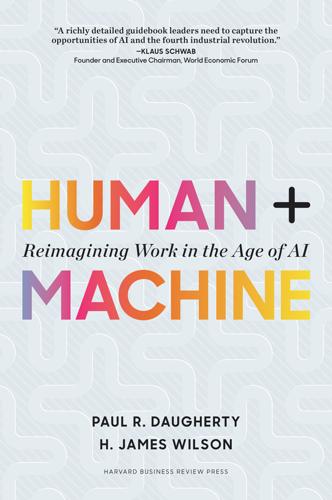
Human + Machine: Reimagining Work in the Age of AI
by
Paul R. Daugherty
and
H. James Wilson
Published 15 Jan 2018
Engineers, thanks to AI, now have more data than ever to understand the operations of their systems.7 Reimagined operations. The field data collected also enables GE to build digital twins of its deployed products, like its jet engines. Engineers can then test virtual flights in which the plane experiences cold, heat, dust, rain, and even a flock of birds.8 The company is also monitoring ten thousand wind turbines, and their digital twins are helping the turbines to adapt in real time. One valuable insight from an analysis of that data is that, depending on the direction of the wind, it might be best to have the leading turbine run slower than engineers might expect.
…
One valuable insight from an analysis of that data is that, depending on the direction of the wind, it might be best to have the leading turbine run slower than engineers might expect. When the front turbine absorbs less energy, the ones behind it can operate at close to their optimal levels, increasing energy generation overall. This application shows that digital twin technology can be applied beyond a single product to holistically optimize an entire wind farm’s activity. According to GE, digital twins could increase wind-farm output by 20 percent and provide $100 million of value over the lifetime of a 100-megawatt wind farm.9 All three of these uses of Predix are freeing up human workers to do less routine work and more engaging work.
…
In the case of the GE maintenance worker, you would need the ability to ask the machine smart questions across multiple levels of abstraction. We call this skill intelligent interrogation. As a maintenance worker using the GE’s digital twin, you would start your interrogation with the troubled rotor but quickly scale up, asking questions about operations, process, and financial concerns. You aren’t just a rotor expert; with the help of the digital twin, you’ve become an expert of a much more complex system; your knowledge of “how things work” has become ever more important. We describe each of the eight fusion skills to guide managers and workers in designing and developing a workforce capable of thriving in the missing middle (see figure 8-1).
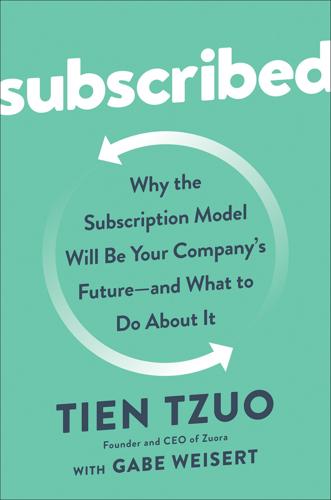
Subscribed: Why the Subscription Model Will Be Your Company's Future - and What to Do About It
by
Tien Tzuo
and
Gabe Weisert
Published 4 Jun 2018
He pointed out that digital twins don’t just represent how their physical assets were designed or how they were built—they display how those assets are operating in real time. A jet engine that’s being operated in the US Southwest, for example, has a different digital twin from one that primarily flies across the North Sea. Over time, those engines behave and degrade in different ways, and they transmit usage data accordingly. Very soon, engineers on the ground will use augmented reality headsets to see all this information overlaid on the jet engines when they inspect them. The digital twins will point out wear and trouble spots and offer opinions on how to resolve issues based on asset history.
…
Today . . . most of our factories look the same as they did 50 years ago. That’s all about to change. DIGITAL TWINS You may have grown up thinking of General Electric as a kitchen appliance company. Today they build wind turbines, jet engines, oil rigs. They also have a thriving data services business—maybe you’ve seen some of their commercials aimed at recruiting more developers. They have over $3 trillion in assets that they manage on a regular basis, and today almost all of them have twins—more specifically, digital twins. We recently hosted Gytis Barzdukas, vice president at General Electric Digital, at our Subscribed conference in San Francisco.
…
So sensor retrofitting and networking, or the “implementation phase” of IoT, are set to become a huge growth industry in the years ahead. And what happens when you have a vast network of digital twins that represent every asset across your entire product line? Well, the first beneficiary was GE itself. What if you had one engine acting up, or one compressor behaving strangely, among thousands? Imagine that if instead of trying to catch problems with expensive and laborious mass maintenance procedures, you had a network of digital twins sending you relevant signals from individual assets. Well, you could fix the biggest problems much faster. GE quickly realized more than $200 million a year in savings, simply by improving their efficiency.

The Metaverse: And How It Will Revolutionize Everything
by
Matthew Ball
Published 18 Jul 2022
In recent years, the biggest uptick in virtual world creation has been via worlds which have no “gameplay” whatsoever. For example, a digital twin of the Hong Kong International Airport was created using the popular game engine Unity—the purpose of the twin was to simulate the flow of passengers, the implications of maintenance issues or runway backups, and other events that would impact airport design choices and operational decision-making. In other cases, entire cities have been re-created and then connected to real-time data feeds for vehicular traffic, weather, and other civic services, such as police, fire, ambulance response. The goal of such a digital twin is to enable city planners to better understand the cities they manage and make more informed decisions about zoning, construction approvals, and more.
…
Satya Nadella, “Building the Platform for Platform Creators,” LinkedIn, May 25, 2021, accessed January 4, 2022 https://www.linkedin.com/pulse/building-platform-creators-satya-nadella. 2. Sam George, “Converging the Physical and Digital with Digital Twins, Mixed Reality, and Metaverse Apps,” Microsoft Azure, May 26, 2021, accessed January 4, 2022, https://azure.microsoft.com/en-ca/blog/converging-the-physical-and-digital-with-digital-twins-mixed-reality-and-metaverse-apps/. 3. Andy Chalk, “Microsoft Says It Has Metaverse Plans for Halo, Minecraft, and Other Games,” PC Gamer, November 2, 2021, accessed January 4, 2022, https://www.pcgamer.com/microsoft-says-it-has-metaverse-plans-for-halo-minecraft-and-other-games/. 4.
…
In other cases, they might be limited to a single user, as when playing Legend of Zelda, or be shared with many others, as in Call of Duty. These users might affect and be affected by this virtual world through any number of devices, such as a keyboard, motion sensor, or even a camera that tracks their motion. Stylistically, virtual worlds can reproduce the “real world” exactly (these are often called a “digital twin”) or represent a fictionalized version of it (such as Super Mario Odyssey’s New Donk City, or the quarter-scale Manhattan of PlayStation’s 2018 game Marvel’s Spider-Man), or represent an altogether fictional reality in which the impossible is commonplace. The purpose of a virtual world can be “game-like,” which is to say there is an objective such as winning, killing, scoring, defeating, or solving, or the purpose can be “non-game-like” with objectives such as educational or vocational training, commerce, socializing, meditation, fitness, and more.
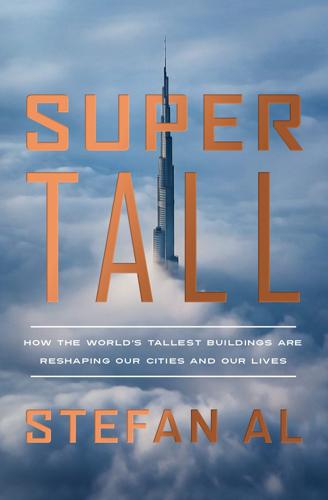
Supertall: How the World's Tallest Buildings Are Reshaping Our Cities and Our Lives
by
Stefan Al
Published 11 Apr 2022
While our future responsive building envelopes may require less cooling inside the building, it’s unlikely that air-conditioning systems will be going extinct anytime soon. Your old-fashioned air conditioner is undergoing fundamental changes, including getting a virtual avatar. Machine learning and “smart” devices have led to a technology called a “digital twin.” This is a virtual replica of a building, the bridge between the physical and the digital world. Intelligent control mechanisms can mine real-time data from sensors in the building, such as air quality and people’s activities. Artificial intelligence algorithms run thousands of simulations to test new air-conditioning settings or to uncover problems the real world can benefit from.
…
In Barcelona, a system of pneumatic tubes runs below the streets to bring trash to an anaerobic digestion facility. These subways for trash more easily bring it to the facility. Then microorganisms break down the material into biogas, a renewable-energy source. As cities are getting more circular, more sophisticated systems will need to manage and share resources. In 2014, Singapore launched a digital twin, a virtual version of the city called “E3A,” “Everyone, Everything, Everywhere, All the Time.” It displays 3D renderings of all the city’s parks, buildings, and waterways, like the video game SimCity, based on real-time data such as energy use, pollution, and noise. The computer model can run virtual experiments and test policies before they are actually implemented.
…
See also glass Debord, Guy, 171 de Botton, Alain, 164, 165–66 de Mestral, George, 82–83 Deng Xiaoping, 101 density, and human behavior, 228–29 de Portzamparc, Christian, 195 design computational methods, 9, 84 principles broken by super slenders, 178 structural efficiency and, 81–82 sustainable ratings of, 137 DeWitt Chestnut Apartments, Chicago, 61 digital twin, 140, 264 Diller Scofidio + Renfro, 201 domes, 27–28, 32, 56, 82, 130–31 Dubai, 3, 13, 36, 37. See also Burj Khalifa, Dubai Easter Island, 41, 207 Eastgate Centre, Zimbabwe, 140–41 economic growth, 12–13, 239 economic height, 188 Eiffel Tower, 6, 7, 88, 89, 145–46, 167, 169 electric lighting, 12, 115, 121, 133, 218 elevator cable, 108–9 elevator consultant, 97 elevator music, 95 elevator operators, 94–95, 107 elevators accidents with, 92, 94–95, 106–7 advances in, 5, 87, 99–100, 104–6, 107, 109–11 air pressure in, 106, 107–8 as an attraction, 97–99 in China, 85, 87, 101, 103, 107 COVID-related changes to, 210 energy consumption by, 109–10 Futurists’ vision for, 96–97 history of, 89–93 howling of, 95, 105, 106 human psychology and, 95–96 partial vacuum in shaft, 105–6 safety and, 11, 87–88, 91–92, 95, 106–7 on side of HSBC Building, 132 sideways, 110–11 speed of, 5, 87, 92, 93, 99, 100–101, 104, 107–8 stacked, 5, 99 of super slenders, 178 wind forces and, 104–5, 106 elevator-testing towers, 104–5, 110 Elzner, A.

Industry 4.0: The Industrial Internet of Things
by
Alasdair Gilchrist
Published 27 Jun 2016
Again, in this scenario Rolls Royce uses thousands of sensors to monitor the engines every second of their working life, building up huge amounts of predictive data, so that it knows when a component’s service is degrading. By collecting and storing all those vast quantities of data, Rolls Royce can create a “digital twin” of the physical engine. Both the digital and its physical twin are virtual clones so engineers don’t have to open the engine to service components that are subsequently found to be fine, they know that already without touching or taking the engine out of service. This concept of the “digital twin” is very important in manufacturing and in the Industrial Internet as it allows Big Data analytics to determine recommendations that can be tested on a virtual twin machine and then processed before being put into production.
…
Creators of these robots are designing them to be self-sufficient, autonomous, and interactive, so that they are no longer simply tools used by humans, but they are already integral work units that function alongside humans. Simulation Previously, if manufacturers wanted to test if a process was working efficiently and effectively, trial and error was required. Industry 4.0 uses virtualization to create digital twins that are used for simulation modeling and testing and they will play more major roles in the optimization of production, as well as product quality. Horizontal and Vertical System Integration Having fully integrated OT and IT systems is something that Industry 4.0 aims for. The goal is to create a scenario where engineering, production, marketing, and after-sales are closely linked.
…
See Industrial internet of things (IIoT) Industrial operations technology (IOT), 1–2, 183 Industrial internet architecture framework (IIAF), 67 Industrial internet consortium (IIC), 66 Industrial internet of things (IIoT) B2C, 2 Big Data, 3, 5 building’s energy efficiency, 20 business gains, 3 catalysts and precursors adequately skilled and trained staff, 6 innovation, commitment to, 6 security, 7 cloud-computing model, 6 commercial market, 1 consumer market, 1 digital and human workforce, 11 digital twin, 11 green house gas emissions, 19 heath care, 14 Industry 4.0, 2 innovation, 7 installing sensors and actuators, 20 intelligent devices, 8 IOT, 1–2 IOT, disadvantages, 20 247 248 Index Industrial internet of things (IIoT) (cont.) IOT6 Smart Office, 21 IT sectors, 5 key opportunities and benefits, 8 logistics adopting sensor technologies, 24 advanced telemetric sensors, 26 augmented reality glasses, 25 automating stock control task, 24 barcode technology, 23 Big Data, 26–27 document scanning and verification, 26 forklift, 24–25 Google Glass, 25 multiple sensors, 26 pick-by-paper, 25 RFID, 23–24 SmartLIFT technology, 24–25 temperature and humidity sensors, 24 track and trace, 26 M2M, 3 manufacturers, 10 Oil and Gas industry automated remote control topology, 18 automation, 18 Big Data analytics, 19 cloud computing, 17 data analytics, 16 data collection and analysis, 18 data distribution system, 17 DDS bus, 18 down-hole sensors, 16 drilling and exploration, 16 industry regulations, 16 intelligent real-time reservoir management, 19 interconnectivity, 17 MQPP and XMPP, 17 remote node's status, 17 6LoWLAN and CoAP, 17 technological advances, 16 wireless technologies and protocols, 17 outcome economy, 10 power of 1%, 4 retailer innovations, 29 IT costs, 27 POS, 27–28 real-time reporting and visibility, 28 stock control, 28 sensor technology, 4 smartphone, 20 WSN, 21 WWAN, 5 Industrial Internet system communication protocols Ethernet protocol, 100 industrial Ethernet, 98 TCP/UDP containers, 100 concept of, IIoT, 88 diverse technology, 116 gateways, 115 heterogeneous networks, 116 industrial gateway, 118 industrial protocols current loop, 97 field bus technology, 98 RS232 serial communications, 96 proximity and access network address types, 114 IIoT context, 115 IPv4, 109 IPv6, 112 IPv6 Subnets, 114 NAT, 111 proximity network, 89 wireless communication technology, 102 bluetooth low energy, 103 IEEE 802.15.4, 102 NFC, 107 RFID, 106 RPL, 108 6LoWPAN, 107 Thread, 107 Wi-Fi backscatter, 105 ZigBee, 103 ZigBee IP, 104 Z-Wave, 105 WSN edge node, 90 functional layers, 93 IP layers vs.
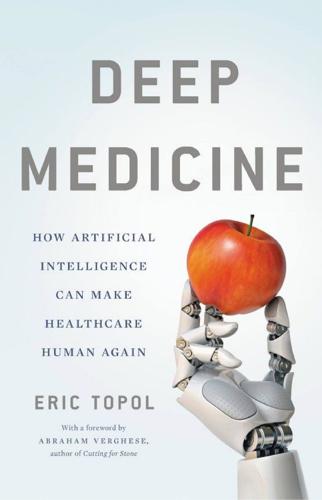
Deep Medicine: How Artificial Intelligence Can Make Healthcare Human Again
by
Eric Topol
Published 1 Jan 2019
With their cloud-based platform, cluster computing, natural-language processing, and AI capabilities, there was the infrastructure to build “the world’s largest library of molecular and clinical data and an operating system to make that data accessible and useful.”46 Tempus Labs, now collaborating with more than forty of the National Cancer Institute centers in the United States, performs a range of studies, including the list above from sequencing to culturing. Beyond the extensive assessment of the patient, Tempus provides “digital twin” information with their report generated two to three weeks after samples are received. This consists of treatment and outcomes information from the de-identified patients most similar with respect to demographics and biologic information. That, too, employs an AI advanced analytic method of nearest neighbor analysis.
…
It would compensate for the fact that most biomedical research performed to date has been done with subjects of European ancestry, which means that physicians often cannot extrapolate their findings to individuals of other ancestries. If all members of the species had comprehensive data in such a resource, with their treatments and outcomes, this would enable AI nearest neighbor analysis to find “digital twins.” These are individuals who most resemble, by all demographic, biologic, physiologic, and anatomic criteria, the person at risk or with a new important diagnosis. Knowledge of outcomes from twins would enable better prevention or treatment of the individual and the next generation. The likelihood of assembling such a resource for the world’s population is very low, especially impaired by concerns over privacy, data security, and cross-cultural sharing considerations.
…
It’s a think-big scenario to imagine what awaits us in the longer term for all medical conditions without geographic boundaries. But even if the odds are low now, I hope recognition of the possibilities will help make those odds better. As soon as patient outcomes are shown to be unequivocally improved by having digital twins inform best treatment, it is likely there will be substantial commitments across health systems to develop and prioritize such infrastructure. With this review of the opportunities at the level of healthcare systems, it’s time to turn upstream—to the discovery side of drugs and the science that leads to better treatments and mechanistic insights about health and disease.
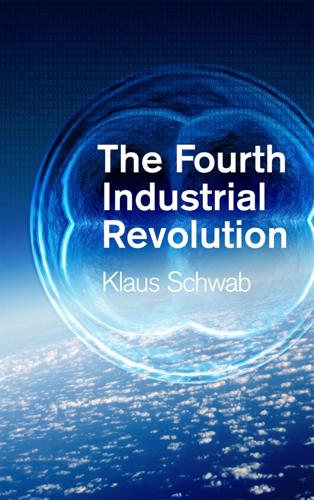
The Fourth Industrial Revolution
by
Klaus Schwab
Published 11 Jan 2016
Positive impacts – Increased efficiency in using resources – Rise in productivity – Improved quality of life – Effect on the environment – Lower cost of delivering services – More transparency around the use and state of resources – Safety (e.g. planes, food) – Efficiency (logistics) – More demand for storage and bandwidth – Shift in labour markets and skills – Creation of new businesses – Even hard, real-time applications feasible in standard communication networks – Design of products to be “digitally connectable” – Addition of digital services on top of products – Digital twin provides precise data for monitoring, controlling and predicting – Digital twin becomes active participant in business, information and social processes – Things will be enabled to perceive their environment comprehensively, and react and act autonomously – Generation of additional knowledge, and value based on connected “smart” things Negative impacts – Privacy – Job losses for unskilled labour – Hacking, security threat (e.g. utility grid) – More complexity and loss of control Unknown, or cuts both ways – Shift in business model: asset rental/usage, not ownership (appliances as a service) – Business model impacted by the value of the data – Every company potentially a software company – New businesses: selling data – Change in frameworks to think about privacy – Massively distributed infrastructure for information technologies – Automation of knowledge work (e.g. analyses, assessments, diagnoses) – Consequences of a potential “digital Pearl Harbor” (i.e. digital hackers or terrorists paralysing infrastructure, leading to no food, fuel and power for weeks) – Higher utilization rates (e.g. cars, machines, tools, equipment, infrastructure) The shift in action The Ford GT has 10 million lines of computer code in it.

The Measure of Progress: Counting What Really Matters
by
Diane Coyle
Published 15 Apr 2025
The boundary between infrastructure and other capital projects can be debated; national accounts m easures do include, for instance, physical assets relating to transport, energy, w ater and waste, communications, and flood defences. Conversely, not all public sector capital expenditure is spent on such infrastructure. Maintenance spending on structures such as roads or rails is vital to sustain infrastructure capital services but is poorly measured, if at all. Current technological changes—such as digital twins and the embedding of sensors in structures (Zomer et al. 2020)—are also changing capital services, maintenance needs, and infrastructure value chains, leading to sectoral shifts in activity. To take the US figures, public expenditure on non-defense physical capital was estimated to be $110 billion in 2018, in current dollars, of which $63.9 billion was for transportation infrastructure; this transportation infrastructure investment had been declining as a share of GDP since the 1960s.
…
One example is found in construction. Large-scale projects are increasingly being digitised. My coauthor Rehema Msulwa and I looked at infrastructure projects that are generally production networks around e ither a construction major or a large engineering consultancy (Coyle and Msulwa 2024). The ambition is a digital twin for major projects end to end. At present, routine parts of the upstream design and development of blueprints are contracted out to service firms in countries such as Brazil, India, and Poland. A digital blueprint (a Building Information Management or BIM system) is used to organise activity on the construction site—increasingly with the manufacture of components carried out off-site—which is a complicated task co-ordinating multiple subcontractors.
…
In major projects the built structure will contain digital elements, such as sensors or digital signalling, and these will generate continuous flows of information once the structure is being used, enabling preventive maintenance and reducing closures or repairs. The terms on which the information is available is a contractual m atter between the principal firm and its suppliers or De m a t e r i a l i s a t i o n 87 customers. In principle, although the entire end-to-end process can have a digital twin, consistent from initial design through operation, these are still rare. Not only are there technical issues such as lack of common data standards and interoperability, but also unresolved questions about how to assign value through contractual arrangements. Every firm in the production network, and final customers too, ought to be able to benefit from the efficiency gains from the use of information to co-ordinate and cut costs.

Demystifying Smart Cities
by
Anders Lisdorf
Methods for communicating with devices When a device has been connected to a central platform or solution, we usually operate with a central representation of that device. This is called a digital twin or a digital shadow depending on vendor. The idea is that the centralized system keeps track of the device’s current state and its target state. This is the way that devices are typically managed. Consider a signal that can take the values of red, yellow, and green. The digital shadow may report that it is currently green. A central solution may wish it to be red and set the digital twin target state to red. This is then sent to the device which updates the signal to red. The central solution has to exchange data with the device in order for this to happen.
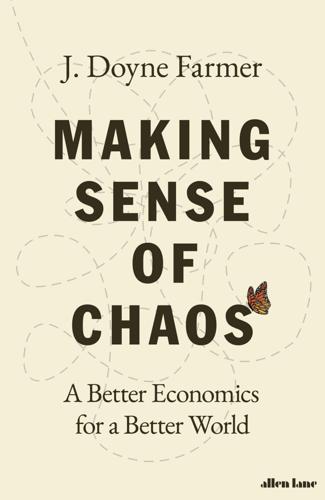
Making Sense of Chaos: A Better Economics for a Better World
by
J. Doyne Farmer
Published 24 Apr 2024
Standard economics models are written in terms of equations, and standard economists solve them by hand, if they can, or with computers if they can’t. Though we use equations too, computer simulation is the workhorse of complexity economics. Digital technology enables us to create analogs of the real world inside the computer, sometimes called digital twins. Essential events in the real world have their counterparts in a simulated world. Scientists now use computer simulations to study just about everything – galaxy formation, protein-folding, the brain, epidemics, battle tactics and traffic jams. While mainstream economists use computers to solve equations, this is not simulation in the usual sense because there is no attempt to create analogs for how things actually happen in the real world.
…
Pilots fly simulated planes whose controls and responses look and feel much like those of a real plane, and virtual flight attendants walk down the aisles and serve drinks to simulated passengers to make sure the seats and trays are well placed. Although there are still limits to their capabilities, computer simulations now enable us to create digital twins of countless real-world systems, and they play an important role in almost every branch of science, including the social sciences – except for mainstream economics! A simulation is often preceded by building a network model. You can think of the network as the skeleton, and the simulation as the living tissue filling out the skeleton and enabling the body to function.
…
Brian 5, 170–71 artificial intelligence 1, 3, 11, 42, 65, 114, 183 Arvizu, Dan 235 Asano, Yuki 124–5, 135 Asian financial crisis (1997) 195, 219, 232 ‘as-if’/’as-is’ reasoning 8, 10, 112 aspiration-level adaptation 110 assets accounting and 47 agent-based models and 7, 115 balance sheets and 45–6 behavioral macroeconomics and 103 buying underpriced 7, 115, 202 contracts and 141 derivative pricing and 150 leverage and 192, 193, 196, 197, 199, 200, 204–5, 208, 210, 211–12, 211 malfunctions and 185 market impact and 150, 151 portfolio choice and 111 prices and 181, 185 quantitative easing programs and 259 risk management and 204–5, 208, 210, 211–12, 211 attractors 30–37, 32, 182, 206 chaotic attractor 31–2, 34, 36, 206 fixed-point attractor 30–31, 33, 34, 36–7, 182 limit-cycle attractor 34 Lorenz attractor 32, 34 strange attractor 30–31, 33, 35 austerity 22, 105, 254 Austria xviii, 258 automation 1, 12, 20, 65, 68–72 Axtell, Rob 82, 274 Aymanns, Christoph xi, xii, 207–8, 210, 213–14, 215 Bachelier, Louis 144, 165 backward-looking expectations 83–4 Bacry, Emmanuel 216 Bagley, Richard 51 balance sheets 45–7, 51, 141, 188, 191, 260, 261–2 Bank for International Settlements 213 Bank of America 175–6, 189 Bank of Canada 258 Bank of England xviii, 89, 188, 216 Bank of Hungary 90 Bank of South Africa 216 baseball, gaze heuristic and 109 Basel Committee on Banking Supervision 204–16 Basel I 204, 214–15 Basel II 205, 206, 208, 209, 210, 213, 214–15 Basel III 215 Basel IV 215 Basel leverage-cycle model xii, 204–16, 211, 219 Baumol, William 62 Beaufort, Francis 224 beavers, hunting of 186–7 behavioral economics 5–6, 9, 17, 40, 46, 47, 93, 103–5, 106, 108, 114, 116, 120, 168 Beinhocker, Eric: The Origin of Wealth 63–4 Bergmann, Barbara 1 Beveridge curve xi, 69, 69, 70–71 ‘Beyond Equilibrium and Efficiency’ conference (2000) 168–9 bid-ask spread 154 biology 4, 8, 16, 21, 51, 54, 175–90, 239, 278 market ecology see ecology, market understanding the economy and concepts from 43–5 BiosGroup 187–8 Black, Fischer 150, 169 Black Monday stock market crash (1987) 161–4, 165, 166, 167, 168, 187 Boeing 73 Bohr, Niels 23, 24 Boldrin, Michele 37 bonds 111, 140, 150, 171, 172, 185, 191, 194–7, 199, 219, 259 Boston University 56, 57, 153 Bouchaud, Jean-Philippe 155 bounded rationality 116–20, 118n, 119, 173 computerized trading strategies and 178 defined 108–9 endogenous business cycles and 124, 128, 129 game theory and 135 market impact and 151, 155–6 risk management and 206 wilderness of xi, 116–20, 118n, 119, 124, 151, 155–6 Boyle’s Law 23–4 brain artificial 171, 172 brainwaves, chaos and 38 cerebral cortex 277, 278 as complex system 5, 20–21 gut brain 139–40, 142, 277 prediction and 23 wilderness of bounded rationality and 118n, 119 Brin, Sergey 49 British Met (Meteorological) Office 224 Brock, William ‘Buz’ 38, 39, 172–3, 200 broker-dealers 207 Brown University 82 Buffet, Warren 115, 139 business cycles Beveridge curve and 71 bounded rationality and creating endogenous business cycles 124–8, 126, 135 chaos and 28–9, 37, 40 creative destruction and 279–80 endogenous business cycle from a simple agent-based model xi, 124–8, 126, 135 inflation and 257, 258 nonlinear behavior and 76, 78 spontaneous emergence of 123, 124–8, 126, 135, 258 Calchas (mythical character) 22 Calinescu, Ani 184 call option 150 Calvet, Laurent 218 Calvo, Guillermo 101–2 ‘Carbon Dioxide and Climate: A Scientific Assessment’ report (1979) 230 Carnegie Mellon 98 Carville, James 123 Case-Shiller index 88, 89n Cass, David 100 census data 6, 67, 80, 81, 87, 112, 115 Center for Nonlinear Studies at Los Alamos 16, 41 change, economy and 8, 123–35 business cycles see business cycles chaotic dynamics and 128–35 internally and externally driven causes 8, 123 markets and 162, 164–70, 165, 167 chaos xviii, 24 Basel leverage-cycle model and 212, 213, 217 business cycles and 28–36 chaotic attractor xi, 30–36, 31, 206 defined 30–36, 32 economy as chaotic 36–41, 128 financial crisis (2008) and 206 fluid turbulence and 218–19 game theory and 128–35 sensitive dependence on initial conditions and 25, 31–4, 40, 212 simple chaos and complicated chaos 37, 38–40, 134, 143, 217, 218–19 stock market and 129, 135, 143 weather and 225, 226, 228, 229 Charney, Jule 227, 230 ChatGPT 114 Cherkashin, Dmitriy 159 chess 113, 132 Chicago school of economics 106–7 child-care workers 70 China, trophic structure of the U.S. and Chinese economies, comparison of xi, 59–63, 59 classifier system 171–2 climate change 1, 3, 12, 57, 65–6, 107, 221–54, 255, 263 Climate Policy Laboratory see Climate Policy Laboratory conscious civilization and 277–80 Dynamic Integrated Climate Economy (DICE) 235–6, 246–7 economic predictions and predictions of weather and climate 221–69 green-energy transition 65–72, 222, 234–7, 245–54, 246, 250, 263–8, 279 historical global cost and deployment of energy technologies 245–54, 246 predicting climate 229–31 solar photovoltaic modules see solar photovoltaic power sustainable growth 267–9 technological progress and 234–54, 237, 243, 246, 250 weather predicting and 223–9 Climate Policy Laboratory xii, 264–7, 264, 280 Agriculture and Land Use Module 264, 266 Energy System Module 264, 265–6 Government and International Relations Module 264, 266–7 Green Industrial Strategy Module 264, 266 Households Module 264, 266 Innovation and Technological Change Module 264, 266 Investment and Financial Stability Module 264, 266 origins of 264–5 The Production Network Module 264, 265 closed-form solutions 76–7 clustered volatility 219 credit and 173 defined 134, 164–5 fluid turbulence and 217, 218 leverage and 199–202, 215 news and xi, 164–74, 165, 167, 199–202, 215 price movements and xi, 164–74, 165, 167 quantitative predictions and models of 173–4 risk management and 204–5 Santa Fe Artificial Stock Market model and 170–73, 184–5, 200 trend-following and 200 coal miners 65 competition 42, 44, 67, 70 biological 177–82, 185, 189 game theory and 129, 133–5 complete network 68 complex systems xix adaptive complex systems 21, 43 chaos and see chaos complicated 35–6 defined 19–21 economy as 16, 42–7 financial system as 142 networks and 48–50 nonlinearity and 75–6, 77 science of 4–5, 19–21, 26, 29–30 self-organization and 48 ‘The Economy as an Evolving Complex System’ conference, Santa Fe Institute (1987) and origins of 16–17, 161, 166 complexity economics agent-based models and see agent-based models ‘as-if’ and ‘as-is’ reasoning and see ‘as-if‘/’as-is’ reasoning bounded rationality and see bounded rationality chaos and see chaos climate change and see climate change complex systems and see complex systems data and see data defined xviii–xix, 4–5, 19 ecology and see ecology equilibrium and see equilibrium hard problems, ability to solve 8–9 institutional support 13–14, 274–6 Leontief and emergence of 54–7 markets and see markets methods and infrastructure, developing 273–4 standard economic theory and see standard economic theory tools 6–7, 11 verisimilitude and see verisimilitude Complexity Science Hub, Vienna 198 complicated chaos 35–6, 38–40, 218–19 complicated complex systems 35–6 Computable General Equilibrium models 102 Congressional Budget Office, US xiv consciousness 5, 20, 21, 76, 278 conscious civilization 277–81 contracts 46, 140–41, 191, 196 convergence trading 158, 194 convergent evolution 188–9 counterparty identifiers 184, 187 COVID-19 pandemic agent-based models and 75, 277 business cycles and 8, 29, 262 model of epidemics’ effect on sickness and the economy and xi, 78–80, 79 Oxford model predicts economy response to xiii–xviii, 12, 50, 78, 263 Cowan, George 20 creative destruction 43, 279–80 credit agent-based models and 173 credit crisis 82 financial crisis (2008) and see global financial crisis (2008) financial turbulence and 191–220 lending and see lending leverage and see leverage risk management and see risk management shadow banking system and 142 CRISIS (Complexity Research Initiative for Systemic InStabilities) 208 Crutchfield, Jim 35 Curie, Marie 270 Cutler, David 166, 167, 168, 169, 170, 172 cybernetics 20 damage function 236, 249 Daniels, Marcus 154 dark matter/dark energy 271 Darley, Vince 187–8 Darwin, Charles 176, 177, 223 data collecting better 270–73 microdata 72, 87, 229 Dawid, Herbert 257 Day, Richard 37 decimalization 187–8 decision making 7, 11, 46, 63, 74, 83, 97, 99, 103, 115, 118n, 135, 141, 266–7 default 8–9, 49, 85, 90, 193, 195, 199, 200, 201, 202, 203, 232 degrees of freedom 38–40, 217, 219 Delour, Jean 216 demand curves 15, 96, 152 equilibrium and 8, 15 housing 87–8, 95–6, 110 inverted demand functions 200–201 labor 65–8, 71–2, 101 market ecology and 182 market impact function and 150–56 Nash equilibrium and 130 shocks xiii, xiv, xv, xvi, xvii, 262–3 Standard models in economics and 85 tatonnement and 15–16 World Energy Model and 249 Wright’s Law and 244 Department of Energy National Renewable Energy Laboratory, US 235 Department of Labor, US xiv derivatives 179, 187 derivative pricing 150, 152 Descartes, René 153 descent, evolution and 176 D. E. Shaw 175, 189 determinism 30–31, 33, 37, 39, 96 ‘diagnostic expectations’ model 104 Diaz-Alejandro, Carlos F. 105 DICE (Dynamic Integrated Climate Economy) 235–6, 248–9 differential geometry 245 digital twins 6, 73 disasters, recovering from 262–3 discounting 100, 133 disequilibrium xiii, 71, 116 dispatchers 68–70 Dosi, Giovanni 183, 257 dot-com bubble 180, 200 Dow Jones Index 38, 39, 169 Dynamic Stochastic General Equilibrium (DSGE) models 99–101, 124, 127, 232, 258, 260 dynamical systems 7, 30–31, 35–8, 40, 50–51 ‘The Dynamics of the Leverage Cycle’ (paper, 2015) 210 ecology 8, 10–11, 43, 44, 54, 160, 173, 175–90 adaptive-markets hypothesis and 184 agents reasoning power and 177–8 competition and 177–82, 185, 189 complexity economics origins and 54–7 convergent evolution and 188–9 ecological rationality 114, 143–4 ecosystems 11, 44, 48, 60, 65, 172, 176, 179, 182, 184, 186, 187, 266, 280 evolution, theory of 7, 176–9, 183, 188–9 ‘Frontiers of Finance: Evolution and Efficient Markets’ (paper, 1999) 183 inefficiency and 177, 179–80, 185 Lotka-Volterra equations 182–3 market ecologist, author’s journey from market anthropologist to 175–8 market ecology theory 141, 174, 178–83 ‘Market Force, Ecology and Evolution’ (paper, 1998) 179–83 market malfunction, market ecology and predicting 184–6 market mass-extinction (August 2007) and 188–90, 198, 261–2 metabolism of civilization, economy as 50–54, 52, 277 production networks and 57–63 regulatory implications of market ecology 186–8 work, evolution of the ecology of 63–72, 66, 69 econometrics 3, 97, 99, 114 ‘Economics after Neoliberalism’ (Naidu, Rodrik and Zucman) 105 Economist, The 240 econophysics 56, 152–3, 155, 168–9, 183 ecosystems 11, 44, 48, 60, 65, 172, 176, 179, 182, 184, 186, 187, 266, 280 efficiency, market/efficient market theory 24, 140–74 allocative efficiency 147–8, 160, 162, 168, 198 ‘Beyond Equilibrium and Efficiency’ conference (2000) 168–9 definition of 139, 141, 143–4, 147–8 environmental-impact statements and 187 Fama and see Fama, Eugene ‘Frontiers of Finance: Evolution and Efficient Markets’ (paper, 1999) 183 inefficiencies, market see inefficiencies, market informational efficiency 148, 160, 162, 169, 198 leverage and 196–200, 202 market ecology and 141, 177, 178, 179–80, 184–7 market-impact function and 150–6 measuring in quantitative terms 168–70 news and 161, 162, 163, 164 paradoxical nature of efficient-market hypothesis 148–9 Prediction Company and 144–52, 154, 157, 159, 169 slow path to 156–60 traffic and 148–9 trend-following and 180 usefulness of efficient market theory 149–56 Eisenhower, Dwight 167, 277 electricity 284, 251, 253 Ellington Management Group 194, 196–7 emergent phenomena Beveridge curve 71 complex systems and 4–5, 19, 20–21, 35, 42–3 equilibrium and 8, 134 economy as 44 heuristics and 110 nonlinearity and 75–7 Santa Fe Artificial Stock Market model and 172 savings and 126–7 simulation and 73 systemic risk as 202 traffic as 74 weather as 232–3 ‘Empirically Grounded Technology Forecasts and the Energy Transition’ (paper, 2022) 251 endogenous phenomena business cycles xi, 126–8, 126, 135, 232 dynamics 78, 161 leverage cycle 206–7 motion 29, 31, 32, 32, 40 energy technologies, historical global cost and deployment of xii, 245–54, 246.

The Thinking Machine: Jensen Huang, Nvidia, and the World's Most Coveted Microchip
by
Stephen Witt
Published 8 Apr 2025
With so many variables, a reality simulator would be expensive, time-consuming to build, and initially have maybe five or six customers. Huang, of course, loved the idea. Huang called his first simulator the “Isaac” robotic-training platform. With time, Isaac led to a more complex product called the Omniverse, which Huang sometimes described as an “industrial metaverse” and other times as Earth’s “digital twin.” The Omniverse would not be a physical product that Huang would sell, but a high-fi digital playground he would lease. And lease not just to robots, but also to cars, and industrial designers, and warehouse builders, and anyone else looking to make complicated physical products work in the real world without breaking things first.
…
Jensen was just getting started. “Now, if the building is robotic, the entire building is software driven, isn’t that right?” he asked the crowd. Huang reasoned that in the future, office buildings would collect data about workers’ behavior, then feed it into an AI, which would redesign the building’s digital twin in the Omniverse before rolling out physical design changes overnight. He speculated that Gensler would evolve from an architectural firm into a tech company that managed the shape-shifting software. “Just as we operate fleets of computers, you’ll operate these buildings,” Jensen said. “And now Gensler, the next buildings you design will be free—isn’t that right?
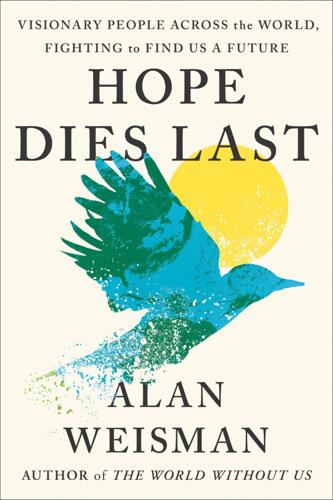
Hope Dies Last: Visionary People Across the World, Fighting to Find Us a Future
by
Alan Weisman
Published 21 Apr 2025
“We’ve always had problems with one through 11,” said one senator. “We can live with some diarrhea, but now that we’re looking at leaving our islands after 3,000 years, help me preserve my culture,” she pleaded. “That’s our highest priority.” But how? Attempts at digital twins of entire ecosystems always prove incomplete, because nature’s variables are uncountable. Wouldn’t a digital twin of an entire culture also be hopelessly inadequate? Eric and Gregg were talking with University of Hawai‘i archivists, but no matter how much history, art, lore, and knowledge is archived, culture ultimately is people. “You are already navigators like the world has never seen,” Gregg told them.
…
MIT Report #PSFC/RR-09-11 MIT Plasma Science and Fusion Center, September 2009. https://dspace.mit.edu/handle/1721.1/93312. Zielinski, Chris. “Time to Treat the Climate and Nature Crisis as One Indivisible Global Health Emergency.” Sexually Transmitted Infections 100, no. 1 (February 2024): 1–2. https://doi.org/10.1136/sextrans-2023-056026. Zurich, Eth. “Scientists Begin Building Highly Accurate Digital Twin of Our Planet.” EurekaAlert, February 24, 2021. https://www.eurekalert.org/news-releases/1035439. Epilogue Books Al-Ansārī, Ayatollah Sheikh Mohammad Hussein. Human Cloning: An Islamic Study on Its Permissibility and Implications. Translated by Mohammad Basim Al-Ansārī. Najaf: Al-Ansārī Foundation, 2010. ———.

Data Action: Using Data for Public Good
by
Sarah Williams
Published 14 Sep 2020
A single Waymo test vehicle scans the environment with LIDAR sensors producing about 30 terabytes of data per day—that's three thousand times the amount of data that Twitter produces daily.6 Programmers at Google use this data to construct 3D representations of the physical world, often referred to as digital twins, which are used to guide autonomous vehicles on the road. In this virtual environment, autonomous vehicles—or any robot for that matter—can be guided and instructed to turn, to stop and pick up a passenger, or to come to a halt for a pedestrian to cross the street. Now imagine that this data is combined with all the data Google stores about you—what purchases you have made online, where you work, the last concert you went to, the locations of your upcoming vacation, even your political views.
…
See also Data analytics; Data analytics ix, xix–xx, 47 “Chicago School” of sociology and 22 interrogating purpose of 214–215 limitations of 166 power dynamics and 199 public health and 10–13 qualitative analytics 39–42 uses of xii Data Canvas: Sense Your City (art project) 85–86 Data collaborations 85–87 Data collection 51–89 crosschecking and correcting the record 68–71 during disasters 80–83 DIY 56–59 governments and 78–79 participatory 52–56 projects 217 Data colonialism xviii, 191–193 Data Deprivation: Another Deprivation to End (World Bank report) 188 Data ethics 131–133, 206 Hacker Code of Ethics 89–90, 135 using data found on the web 90–94 Data exhaust 130 Data for Development (D4D) Challenge 208 Data for Good Bloomberg Fellow 207 Data for Good Exchange 210 Data insights communicating 137–186 public 219–220 DataKind 207 Data licensing 207–208 Data literacy 85–87, 168 data collaborations and 85–87 Local Lotto module 173 Data modeling, cities and 214 Data philanthropy 208–210 Data Pop Alliance (DPA) 210 Data practices, unjust xiii Data privacy xix, 135, 187–188, 194, 196–199, 221 Data Protections Direction 198 Data scientists, contemporary 166 Data sharing 137–186, 204–205 benefits of 143–146 insights of xvii public transport data for Nairobi 146–155 through visuals xvii–xviii when benefits are mutual 200–203 Data-sharing agreements, developing 204, 206–208 Data visualization 138–139, 183–184 comparing stop-and-frisk by race 183 interactive 218 measuring and 61, 62–64, 66 De Blasio, Bill 178 Deepwater Horizon oil spill 2019, 69, 217 Defense Advanced Research Products Agency (DARPA) 193 Democratic Party 5 Department of Health and Mental Hygiene, New York City, air quality initiative 78–79, 79, 85 Department of Sanitation in New York City (DSNY) 127–128, 128 Descriptive Map of London Poverty 17 “Design and the Elastic Mind” exhibit, Museum of Modern Art 162, 162, 163 Dianping 98–99, 103, 113, 134 Digital Ethics Lab, Oxford 210 Digital humanitarianism 131–133 Digital Humanitarian Network 82 Digital Matatus project, Nairobi, Kenya 77, 146, 151, 151–152, 154–155, 157, 183, 216 Digital Neighborhoods research project 126–127, 128–129 Digital twins 189 Disabled people, digital tools for 190–191 Doctors Without Borders 80 Domesday Book 2, 3 Do no harm 220–221 Dosemagen, Shannon 70–71 Du Bois, W. E. B. 22, 24, 30, 43 African American owned businesses in the US (chart) 25 Income and Expenditure of150 Negro Families in Atlanta, GA (chart) 24 The Philadelphia Negro 22, 24 Eagle, Charles W. 8 Easy Taxi 204 Ebola outbreak, West Africa 80, 81, 198, 208–209 Economist magazine, “Data Deluge” stories 47 Edney, Matthew 155 Electronic colonialism 192–193 EmoLex 124 England's Regulated Slave Trade Act of 1788, 140 Environmental Protection Agency (EPA) xv, 53, 68 Erle, Schuyler 83 Ethics 131–133, 206 data and xviii, 54, 198–199 Hacker Code of Ethics 89–90, 135 hacking and 89–90, 132–135 surveys and xii European Union, data protection in xix, 187–188, 194, 198–199, 221.

AI 2041: Ten Visions for Our Future
by
Kai-Fu Lee
and
Qiufan Chen
Published 13 Sep 2021
The treadmill can be tilted to simulate hills or stairs. This allows essentially any movement without the danger of falling. With these capabilities in mind, I project that the most likely application will be entertainment related, for example, hyper-realistic games where our digital twins will play games, compete, and battle with other people’s digital twins in athletic competitions and battle simulations. Users could also interact with and spar with purely synthesized beings (like Hiroshi in “My Haunting Idol”). With such experiences at our disposal, humans by 2041 may increasingly live in multiple worlds, one real, some virtual, and others a mix of the two.
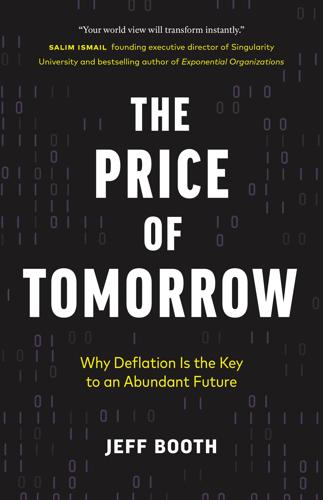
The Price of Tomorrow: Why Deflation Is the Key to an Abundant Future
by
Jeff Booth
Published 14 Jan 2020
Virtual and augmented reality (mixed reality) will offer a different, more immersive connection with our technology, and it will change the way many things are done. Take, for example, a startup in Vancouver called LlamaZOO, which is in a new category of data collection called spatial data that is at the intersection of digital twinning (an exact twin of the physical world that is digital), mixed reality, and business intelligence. By twinning the real world via satellite imagery, drones, and lidar, and adding global positioning, mapping, and other data streams, the company uses mixed reality to reduce the cost of planning and work in the physical world.
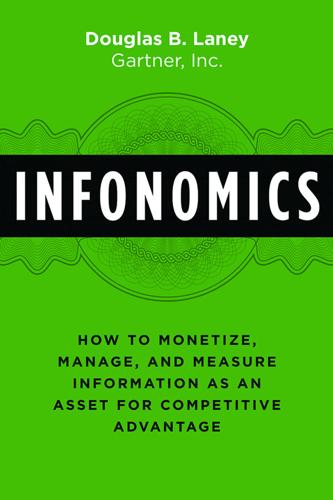
Infonomics: How to Monetize, Manage, and Measure Information as an Asset for Competitive Advantage
by
Douglas B. Laney
Published 4 Sep 2017
The rise of the machines, algorithmic sprawl, and the promise of artificial intelligence (AI) depend upon accurate, complete, timely, granular, and unique information sources. The internet of things (IoT) will become the single fastest growing source and most voracious consumer of information. Digital twins that precisely represent models of physical things and their state rely on a variety of metadata, along with condition and event information. 3D printing is entirely contingent upon information-based representations of objects, and their ability to be monetized and managed effectively. The institutionalization of ethics in the face of commercialized and politicized misinformation will require the generation and management of new information sources to emerge with built-in trust indicators.
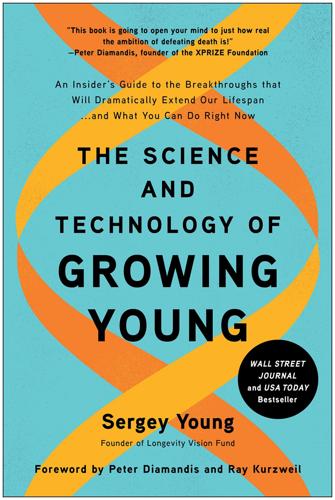
The Science and Technology of Growing Young: An Insider's Guide to the Breakthroughs That Will Dramatically Extend Our Lifespan . . . And What You Can Do Right Now
by
Sergey Young
Published 23 Aug 2021
If our consciousness can really be boiled down to ones and zeros (or the fuzzier calculation models used in quantum computing), then how will we distinguish the difference between you and a perfect computer emulation of you? “Presuming that you are wildly successful with this,” I asked Anders, “what subjective awareness do you think that our digital twins will have? Will this emulation truly be you for all intents and purposes? Or will it be just a lifeless simulation?” “I believe an emulated person would actually be a person, with a consciousness and emotion,” said Anders. “We should treat it as a person and give it human rights. But will brain emulations be a perfect continuation of your personal identity?
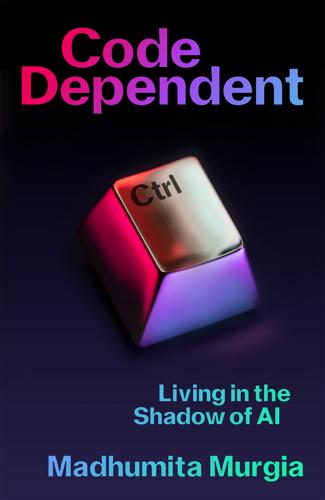
Code Dependent: Living in the Shadow of AI
by
Madhumita Murgia
Published 20 Mar 2024
A few of these close-ups had been labelled ‘explicit’ – which led me to discover that they had been published on pornography sites. I couldn’t click through to the sites themselves without paying PimEyes, which I chose not to do. But it did leave me with a nagging fear of what might exist out there unbeknownst to me, my scattered digital twins over whom I had no control or ownership. When I spoke to Cher, she said the idea that someone could take a photo of her face and find out everything there was to know about her felt like an impossible thing: ‘Star Trek stuff’, she called it. Yet, this technology had made the leap, turning her from an anonymous face in the crowd into a person whose secrets could be forcibly revealed.

Merchants of Truth: The Business of News and the Fight for Facts
by
Jill Abramson
Published 5 Feb 2019
While the print journalists worked at the paper’s headquarters near the White House, which was made famous in the movie All the President’s Men, “the web people” worked a good distance away, across the Potomac River, in Virginia. The print team didn’t trust the people working on the web to have the same values that Bradlee and Downie had inculcated in the newsroom on 15th Street. Graham thought the culture of the main newsroom would suffocate its digital twin. He also liked that Virginia was a nonunion state. Its storied history and strong local ties did little to save the Post from the inexorable decade of decline that began in 2002. The internet had changed people’s reading habits, and circulation of the printed paper fell by nearly half. Ad revenue plummeted too, as local department stores and businesses of all kinds closed.
…
It was the digital cousin of the old theory of salesmanship, “The customer is always right.” Even in 2011 the digital operations at most of the major news outlets amounted to a website that was only marginally sleeker than it had been more than a decade prior. News websites were still designed to be digital twins of newspapers. For Smith, this presented an enormous business opportunity. “I feel in general the 800–1,200 word form of the news article is broken,” he said in a Nieman Lab interview. The basis for that conclusion: “You don’t see people sharing those kinds of stories.” BuzzFeed’s stated goal was “reinventing the wire story for the social web.”

How Big Things Get Done: The Surprising Factors Behind Every Successful Project, From Home Renovations to Space Exploration
by
Bent Flyvbjerg
and
Dan Gardner
Published 16 Feb 2023
to the functionality of the electrical and plumbing systems (Will it work?) and the budget (Can we afford it?). Iteration was now supercharged. Gehry took full advantage of the software’s capabilities, trying yet more ideas. In a real sense, the Guggenheim building was first fully and successfully constructed on a computer. Only after the completion of its “digital twin”—a term that would be coined years after Gehry first created one—did construction begin in the real world. That approach enabled not only artistic daring but astonishing efficiency, as Gehry and his team demonstrated when they later tackled 8 Spruce Street in New York City, a seventy-six-story apartment building.

The Future Is Faster Than You Think: How Converging Technologies Are Transforming Business, Industries, and Our Lives
by
Peter H. Diamandis
and
Steven Kotler
Published 28 Jan 2020
Your comments become commands: “I’d love some black pumps to match my new dress” makes racks of perfectly fitting shoes appear. Yet none of these shoes seem exactly right. “How would this dress look with those satin Jimmy Choos sitting in your closet?” asks your friend. No problem. Every piece of physical clothing you own in the real world has a digital twin available in the virtual. You ask, and instantly, you’re wearing them. When you’re done selecting your outfit, the AI pays the bill. While your new clothes are being 3-D printed at a warehouse—before speeding your way via drone delivery—a digital version has been added to your personal inventory for use at future virtual events.

Arriving Today: From Factory to Front Door -- Why Everything Has Changed About How and What We Buy
by
Christopher Mims
Published 13 Sep 2021
This simplified, averaged, and partly inferred simulation of the outside world—a blend of what’s sensed in this instant with things remembered from a past encoded in the system’s detailed, 3D map of the world—is an essential buffer between the part of the machine that makes decisions and the parts of the machine that sense what’s going on in and around the truck. On the surface, at least, the virtual world presented to the truck’s AI has remarkable parallels with what goes on in your head. One reason this “digital twin” of the world outside is so important is that it allows the truck’s AI to interact with a relatively stable and highly accurate version of reality, with almost all the errors, which are inevitable in individual sensors, filtered out. The human brain does something similar, and what happens when this function of our minds breaks down is telling.

New Laws of Robotics: Defending Human Expertise in the Age of AI
by
Frank Pasquale
Published 14 May 2020
A database may include labeled images of millions of different abnormalities that eventually became cancerous, as well as millions that did not. As we might search on Google for websites matching a query, a computer can rapidly compare images of your colon or skin with those in the database. Ideally, machines learn to spot “evil digital twins”—tissue that proved in the past to be dangerous, which is menacingly similar to your own.9 This machine vision—spotting danger where even experienced specialists might miss it—is far different from our own sense of sight. To understand machine learning—which will come up repeatedly in this book—it is helpful to compare contemporary computer vision to its prior successes in facial or number recognition.

Frostbite: How Refrigeration Changed Our Food, Our Planet, and Ourselves
by
Nicola Twilley
Published 24 Jun 2024
The more time I spent with the ACES team, the more acutely I felt both their excitement and their anxiety about Rwanda’s unbuilt cold chain: get it right, and enter a promised land of food security, prosperity, and sustainability; fail, and wave goodbye to a livable planet while accelerating inequality and exacerbating hunger. “These are the kind of problems that hadn’t really even been recognized as problems or challenges before—they were just consequences,” Philip Greening, another member of the ACES team, told me. Greening is currently constructing a computer model of Rwanda—a digital twin in which all the possible variants for preserving and moving its food can be implemented, priced, and evaluated—in order to answer such pressing and essential questions as: Where should cooling hubs be placed to be most useful for the communities that need them the most? What will happen if, as currently planned, slaughterhouses are built in rural areas, so that the live chickens I saw, transported on bicycles and slaughtered at home, are replaced by carcasses that need to be moved, stored, and sold under refrigeration?